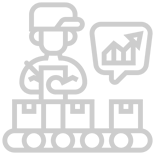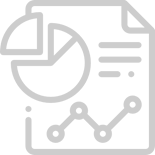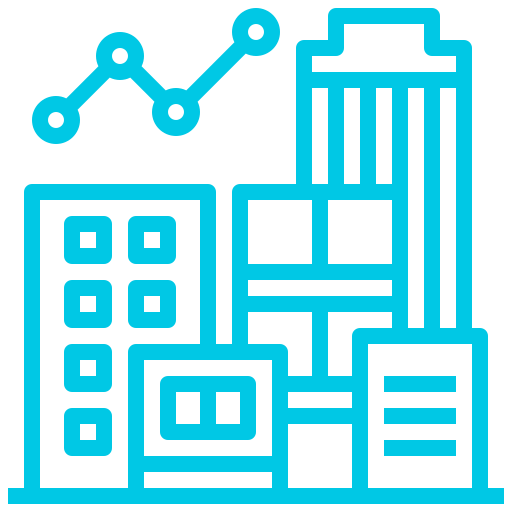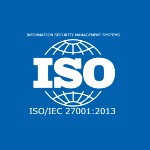Does AI Provide an Advantage in the Battle for Tech Talent?
Posted by | Fuld & Company
In a three-part “AI and the workplace” blog series, Fuld & Company will explore the implications of using AI as a competitive advantage in acquiring tech talent.
AI and the Workplace Blog Series, Part 1
 Today, tech companies are weighing their options when it comes to embracing Artificial Intelligence (AI) as it infiltrates workplaces and drives competition. There is no doubt AI will substantially transform the way these companies do business and hire talent, and so understanding AI’s role in their business model is crucial.
Today, tech companies are weighing their options when it comes to embracing Artificial Intelligence (AI) as it infiltrates workplaces and drives competition. There is no doubt AI will substantially transform the way these companies do business and hire talent, and so understanding AI’s role in their business model is crucial.
With significant investments in AI concentrated in the tech industry, companies are asking:
- Can AI replace jobs?
- Can AI and humans successfully work together?
- Should AI be leveraged to increase efficiencies across organizational structures?
The answer to all the above is “yes.” As the workplace modernizes and products and services experience tremendous advancements, the need for top tech talent is amplified and can directly influence how a company differentiates itself. To address this growing challenge, we’ve identified key considerations and potential questions for companies to ask when it comes to embracing AI and bridging the talent gap.
Can Talent Scarcity be Solved by Replacing Humans with AI?
AI and machines have outdone humans at tasks like probability analysis, algorithmic processing and pattern recognition, but humans are still needed to work through issues that require a keen ability to juggle complexity and subtlety.
However, AI could disrupt fields that solely rely on automated, repeatable tasks, whereas emotions and discrete soft skills are better left for people. The positions at highest risk of being replaced by automation come from a variety of roles with repeatable tasks such as:
- Data Entry Specialists
- Technicians
- Distributors
- Equipment Operators
The roles in tech that have significantly lower risks of automation are notably:
- Computer Systems Analysts
- Software Developers
- InfoSec and Web Developers
While AI’s integration into tech may come from different avenues, it doesn’t necessarily solve the scarcity of talent, but rather, changes workplace dynamics and companies’ perception of certain roles’ value. There is a lot of confusion in the marketplace surrounding exactly how AI will help fill empty jobs with humans or eliminate jobs with its capabilities, and it’s important for companies to keep in mind that AI can assist with finding new employees but cannot fill their roles solely with programs. While this is great news for potential employees, it still means that companies must leverage AI to simply hire smarter instead of defaulting to automating jobs.
Exploring the Pros and Cons of Leveraging AI for Talent Acquisition
In general, AI integration does have a space in recruiting—AI capabilities can match prospects with positions based on keywords that are aligned between resumes and job descriptions and can cut down on resources needed to comb through resumes.
Integrating AI into the hiring process seems like an ideal solution for time savings, but, consider that there are concerns that AI might be outsmarted by humans. This means non-traditional or unorthodox candidates who could be qualified for a role get overlooked, and others, who are well-versed on AI’s quirks, may pepper their application materials with buzzwords or industry jargon, putting them at the top of the candidate pool.
Human empathy in the hiring process cannot be undervalued, and it’s possible AI technology lacks the ability to screen for soft skills in the ways a human can. Another place where AI and HR functions should marry to yield productive results is in screening for bias.
Machines may seem exempt from partiality that humans can subconsciously infuse in deliberations, but they have proven that they exhibit potential for prejudice. If patterns are made between interesting candidates beyond the keyword matches, AI may learn to associate commonalities between candidates that possess “desirable traits.” It’s no surprise, then, that Amazon decided to abandon their experimental ML (machine learning) hiring algorithm in 2015, after it noticed a pattern of male dominance throughout applications and began to express women.
What are the Risks of Over-Prescribing AI?
Generally, AI is a tool used to significantly increase productivity, but specific to the applied sciences, further considerations must be made. In a space that leans towards over-prescription of technology, it’s more likely that a lack of human touch could be harmful in a competitive market. While most software jobs can be approached from a technical perspective, there is still significant public uneasiness with the idea that keywords are the sole determinant of a tech talent’s quality. While AI and ML tools are a necessity to compete with goliath companies like Amazon, losing every element of human touch can create negative outcomes. Without it, talent can be treated as an asset, with little care and compassion, discouraging candidates and current employees alike. AI should complement an HR team’s vision as opposed to being the sole determinant for key decisions and communications.
Key Considerations
There are clear barriers facing AI’s adoption including: the rate of public acceptance, AI’s ongoing evolution to become more proficient, human uneasiness around implementation, and the creation of new, unique jobs that will exist to purely oversee AI. It’s clear companies at every stage are entering a new frontier, and as AI advances to acquire greater human-like characteristics, public perception and acceptance may also evolve.
For industries like tech, that need new talent, companies must leverage AI tools in a practical manner, and remain mindful that there is a potential of excessively depending on AI. The need for tech talent coupled with AI’s popular day-to-day usage, is currently shaping an evolving landscape.
For companies embarking on their AI journey to remain competitive, they must strive to strike a balance between people and automation and consider the options that are best suited for their overall business objectives.
Please revisit this series to read Part Two where we address how SMBs and large tech organizations should strategically approach AI and HR Tech.
Tags: Artificial Intelligence, Disruption, Human Resources, Information Technology, Innovation, Modern Workplace, Other Industries, The Race for Talent



















